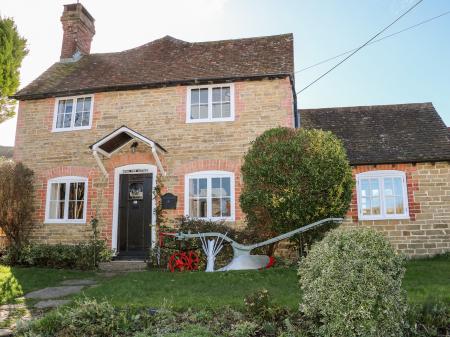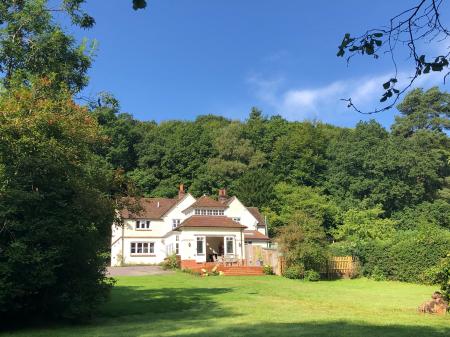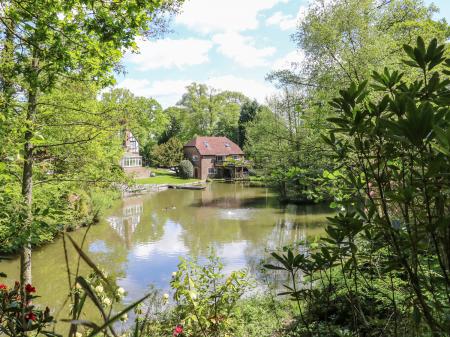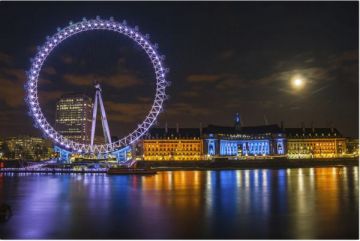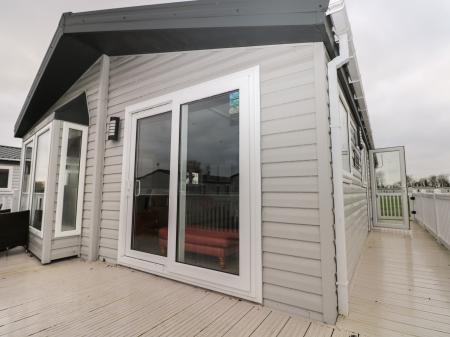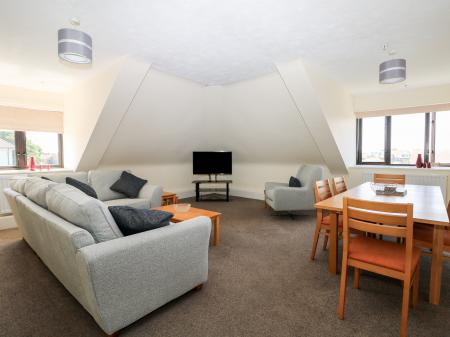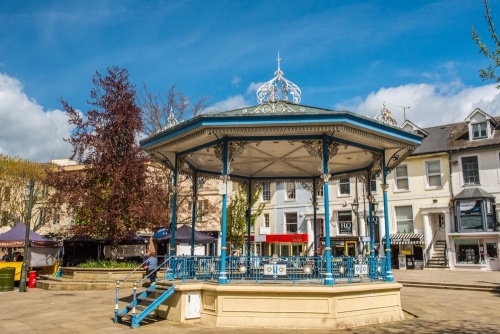
In the early medieval period, Horsham provided crossbow bolts and horseshoes for the king's armies.
The parish church of St Mary dates to the 12th century and stands at one end of a long street known as The Causeway, lined with attractive old houses.
One of the most famous residents of Horsham was the poet Percy Bysshe Shelley, whose monument can be found in the church. Nearby is Causeway House, a historic 16th-century half-timbered building which serves as the home of Horsham Museum.
Near Horsham is Christ's Hospital School, a Bluecoat school for boys founded by Edward VI in 1552. It was moved from London to Horsham in 1902.
Just outside the town is Warnham Nature Reserve, a popular area for bird-watching.

Horsham Stone
The town gives its name to a locally quarried form of fine-grained calcareous sandstone. Horsham Stone was first widely used by the Romans, who appreciated the fact that the stone could be split into thin roofing tiles.
The stone is known for its striking ripple marks, making each stone unique. Horsham stone has been used primarily as a roofing material over the past 2000 years and can be found on hundreds of churches, castles, and medieval buildings across the south-east of England.
Heritage Highlights
The following is based on the excellent Horsham Town Trail leaflet published by the Horsham society. We picked up a copy for a nominal sum at the Horsham Museum on The Causeway and used it to explore the town.
Jubilee Fountain
Near the junction of North Street and Chart Way is the Jubilee Fountain, erected to celebrate Queen Victoria's Diamond Jubilee in 1897. It was moved to its present location in 1992.
Bottings
At the northern end of Chart Way, near its meeting with North Street, is Bottings, once the George pub. This is one of the original Horsham burgage houses laid out in the 14th century. It is a timber-framed hall house with a pair of cross wings.

St Mark's Spire
At the southern end of Chart Way is one of Horsham's iconic sights, the spire of St Mark's Church. The spire is all that remains of a church erected as a chapel of ease in 1840. The spire was added to the church in 1870. The church was pulled down in 1989 but the spire remained. It is now rather incongruously surrounded by modern office buildings but it remains a striking example of Victorian church architecture.
Chart Way leads into Carfax. Here you can see a plaque marking the entrance to Pirie's Alley, a narrow medieval alley known locally as a 'twitten'. The alley leads to a modern shopping area where you can see a sculpture of Mr Pirie, a former headmaster of Horsham School, with his donkey.

King's Head
At the junction of Carfax and East Street is the King's Head inn. Though the King's Head has a Georgian facade it hides a much older structure. The inn was once a bust coaching inn and later served as an office for the Inland Revenue.
Town Hall
Perhaps the most striking historic building in Horsham is the old Town Hall on Market Square, erected in 1812 by the Duke of Norfolk on the site of a late medieval market hall. Many of the surrounding buildings on Market Square are timber-framed, refaced in later materials. There are more timber-framed buildings on Talbot Lane, including the former Talbot Inn and the Old Posting Box. The Box was an early collection point for postal service to London.

Causeway House / Horsham Museum
Behind the busy Market Square, you enter an area of calm; a long, broad street leading past elegant period houses to St Mary's Church at the far end. This is The Causeway. On the left side of the Causeway is Causeway House, a beautiful 17th-century property that now houses the Horsham Museum.
Do take the time to explore the museum. It is without a doubt one of the finest small museums I have ever had the pleasure of exploring. Don't be fooled by the narrow exterior fronting onto The Causeway; the museum extends back and up in a seemingly endless succession of rooms dedicated to different aspects of Horsham's long history. The museum is like Dr who's Tardis; much bigger on the inside than it appears on the outside.
Among the exhibits is a special display on poet Percy Bysshe Shelley, his life and works, with several early editions of the poet's published works. There are exhibitions of period costumes, armour, local trades and craftsmanship, and longcase clocks. Behind the house is a historic barn filled to overflowing with agricultural equipment, and another building housing example of historic transport, such as a pennyfarthing bicycle and the 1863 manual fire engine used by the Horsham Voluntary Fire Brigade that needed teams of 20 men to pump water.

Just outside the Museum look for a series of rectangular concrete blocks set into the pavement. These are all that remain of 'dragon's teeth' erected as a civil defence measure during the early days of WWII.
The Causeway is blessed with an abundance of 15th and 16th-century houses, among them the Manor House, on the site of a 12th-century manor.
St Mary's Church
The first record of a vicar in Horsham is recorded in 1231, but there was undoubtedly a church on this site long before that time. The present church was consecrated in 1247 and is a beautiful example of Early English architecture. At the northeast corner of the church is the 15th century Lollards Tower. One of the historical highlights is a memorial to Thomas Hoo (d 1486), an ancestor of Queen Anne Boleyn, second wife of Henry VIII. The monument is built of Purbeck marble and consists of an altar table topped with a canopy supported on four corner columns.
Even older is the effigy of Sir Thomas de Braose, dated to 1395. Perhaps the finest tomb of all is a black and white marble monument commemorating Elizabeth Delves ((d 1654). It was sculpted by Edward Marshall and is considered among the finest memorials in Sussex. Behind the church is a beautiful green space called the Remembrance Garden, laid out by Nellie Laughton in 1925 and now in the care of the town council.

Quaker Meeting House
If you follow the River Arun through the Garden of Remembrance and turn north once more you come to the Quaker Meeting House on Albion Way. The Meeting House was built in 1786. A few steps further on is the Unitarian Church, erected as a General Baptist Church in 1721. Next to it is a medieval hall house, linked to lovely 18th-century cottages.
Turn east onto the pedestrianised shopping area known as The Bishopric and you see a striking water feature known as 'Rising Universe', installed as a reminder of the town's link to Percy Bysshe Shelley. Follow West Street to Carfax, with its Victorian bandstand, war memorial, and broad market place.
Horsham is a delightful historic town, full of interest. The Museum is outstanding, and I highly recommend taking the time to follow the Heritage Trail.

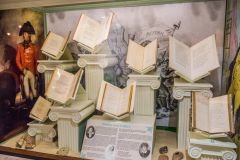






 We've 'tagged' this attraction information to help you find related historic attractions and learn more about major time periods mentioned.
We've 'tagged' this attraction information to help you find related historic attractions and learn more about major time periods mentioned.